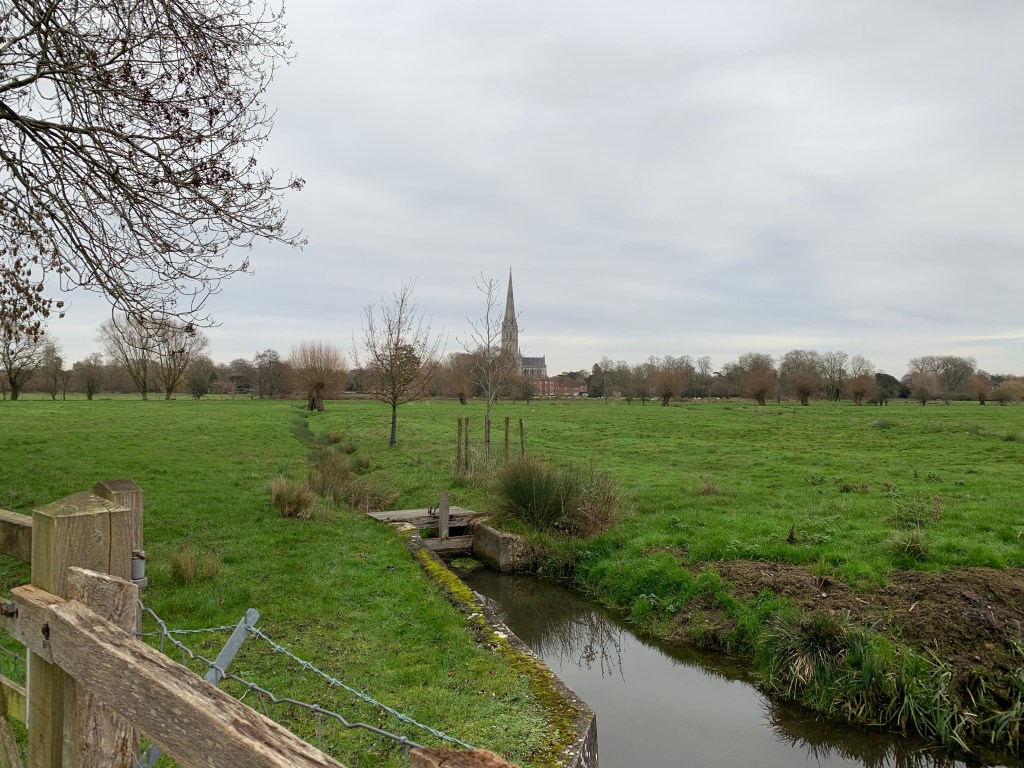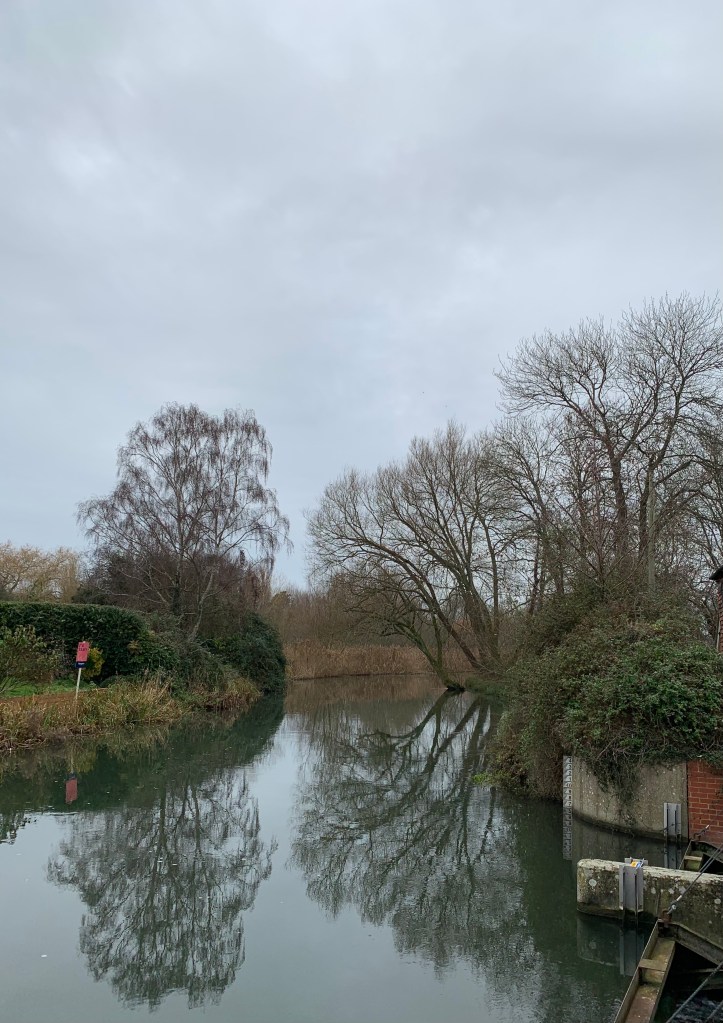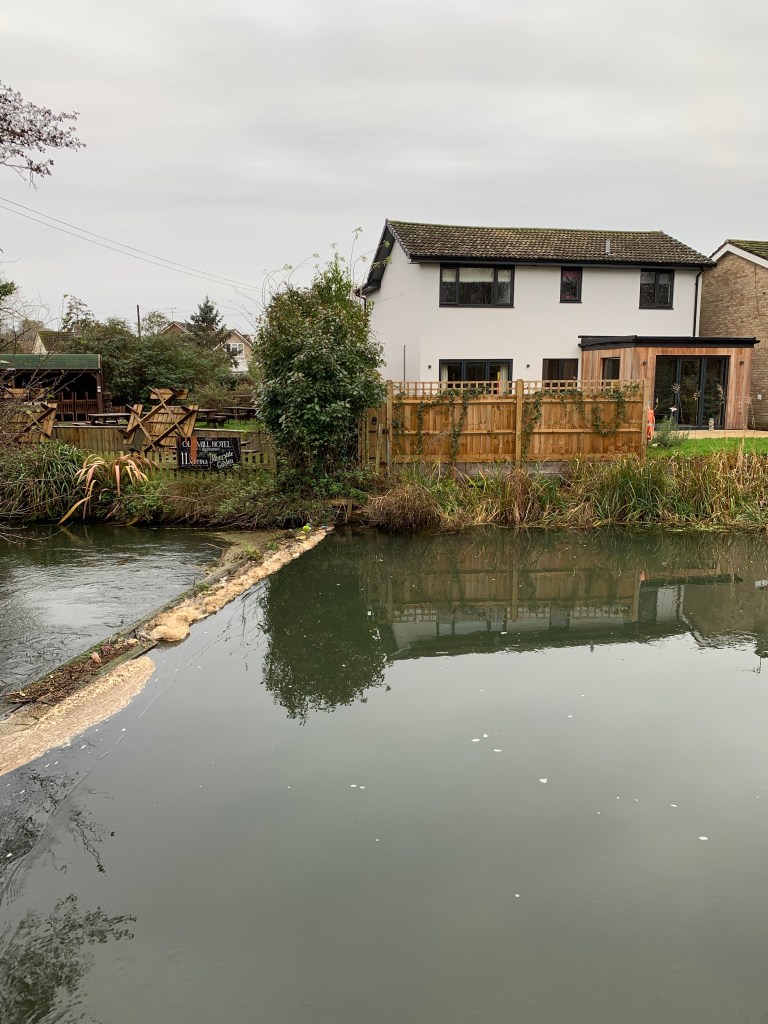Water meadows have been described as irrigation ditches but this is far too simplistic. In simple forms they existed in medieval times when a stream was blocked to flood adjoining fields. Sometimes called ‘’managed drowning’ they deposited nutrients and their thin layer of water protected grass from frost, so produced early grass, especially for sheep.
Sometimes a further drowning in summer increased moisture in soil so produced larger hay crop.
They became widespread in England in the 17th century as the population rose after the monasteries closed so more food was needed.
In the 18th century Dutch engineers brought advanced techniques especially in the Fens but also low lying fields such as Harnham on the edge of Salisbury. A fine balance was needed to provide the right amount of water without swamping it and depleting the soil of oxygen. Dangers of water logging were avoided by keeping the water moving as on the Avon there.
By the 1790s an estimated 15,000-20,000 acres were covered in such meadows in Wiltshire. Many were converted from wetlands as part of the agricultural revolution, especially as food prices soared during the Napoleonic Wars.
But late 19th century saw areas fall from use as cheap colonial food was imported. Most were abandoned between 1918-60. Ministry of Agriculture provided grants to level old meadows to improve efficiency but this led to loss of fertility.
These are pictures of the Harnham Water Meadows near Salisbury showing the fast flowing Avon with lots of gates and impossible to photograph fish.






View of Cathedral




